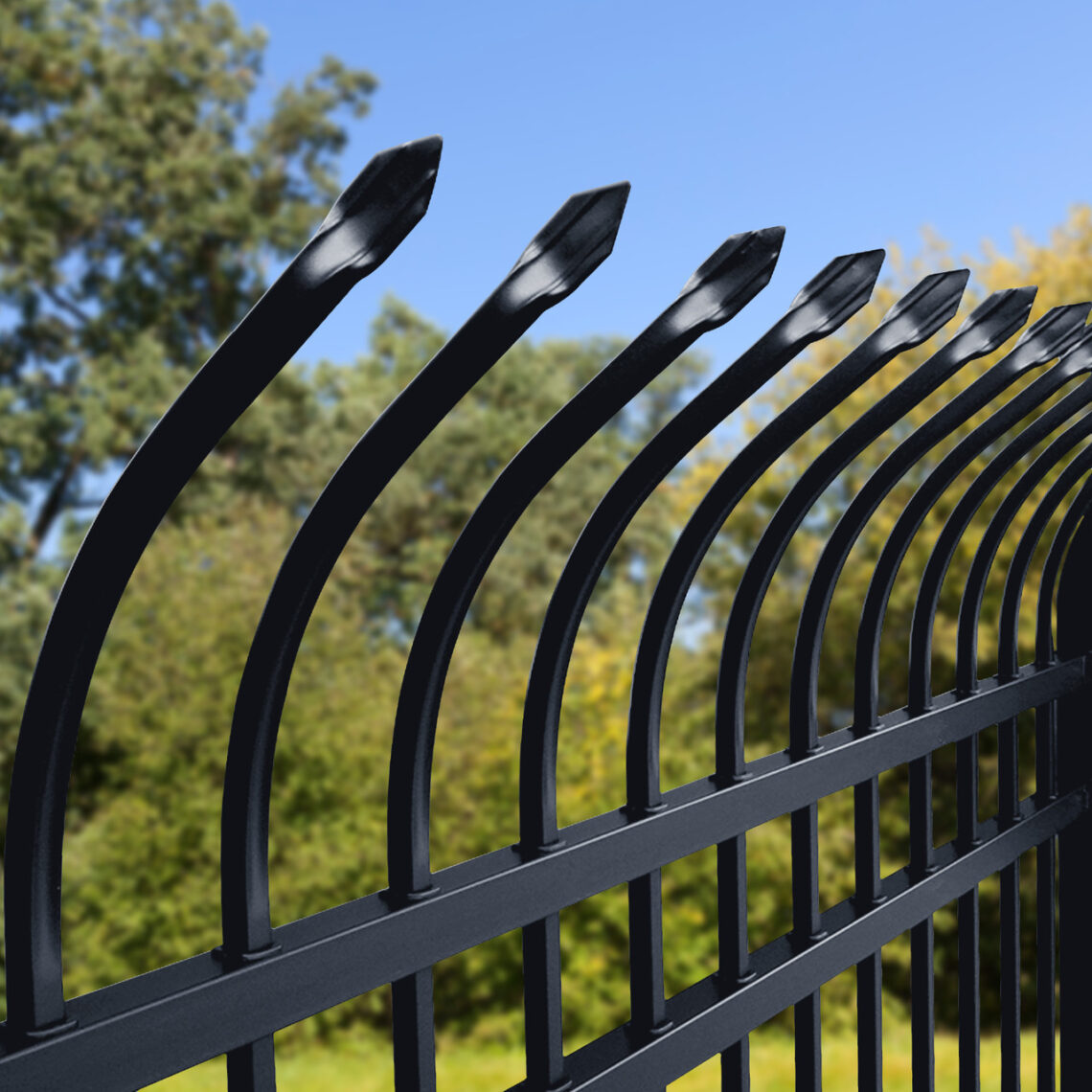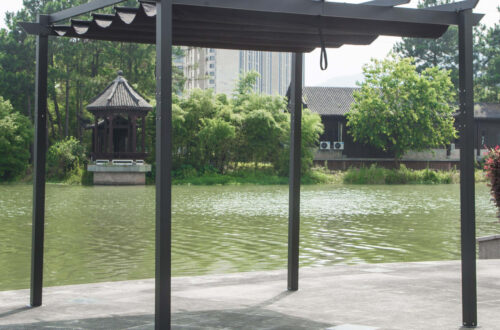Securing an industrial property requires the right fencing solution—but how much should you expect to pay? The industrial fencing cost varies based on several factors, including materials, labor, and additional security features. Whether you’re installing a wrought iron fence, galvanized chain link fence, or steel fences, understanding the pricing structure of the different types of security gates and fences can help you make an informed decision. This guide breaks down the essential cost considerations, different commercial fencing types, and budgeting tips to ensure you get the best value for your investment.
What Affects Industrial Fencing Costs?
Below, we dive into everything you need to know on industrial fencing pricing.
Material Type
So, how much does a fence cost? The most significant factor influencing fencing cost is the fence material. Different materials come with varying price points, durability, and maintenance needs. Chain link fence cost is generally lower compared to ornamental steel fences, while vinyl fencing provides a balance of affordability and longevity. Aluminum fencing and wrought iron fencing are premium choices that offer durability and aesthetics but come with higher price tags.
Fence Height and Length
The size of your industrial fence impacts the overall cost. Taller fences provide enhanced security but require more materials, increasing fencing costs. Similarly, the fence length directly affects pricing, as longer installations demand more fencing material and additional labor.
Installation Complexity
Some fencing types are easier to install than others. A new fence on flat, open terrain is simpler and cheaper to install than a fence installation on uneven ground or rocky areas. If you need to remove an existing fence before installing a new one, expect additional costs. Before estimating costs, it’s crucial to have a clear vision of your commercial fence design, dimensions, and security requirements to ensure accurate pricing.
Labor Costs
The cost of hiring a fence company depends on location, expertise, and the complexity of installing the metal fence. Highly skilled labor is essential for wrought iron fences, steel fencing, and other intricate metal fence types, adding to the final price.
Permits and Regulations
Before installing a security fence, check local regulations and permit requirements. Certain areas have strict zoning laws regarding fence height, fence type, and placement, which may require additional fees.
Additional Security Features
Upgrading your industrial fencing with barbed wire, fence panels, or electronic security measures increases costs. Features such as motion sensors, alarms, and upgrading to a commercial security entrance gate can significantly enhance security fencing but require additional investment.
Types of Industrial Fencing and Their Costs
Chain Link Fencing
One of the most common and cost-effective options, chain link fencing is widely used for industrial properties. Prices vary depending on fence height and gauge thickness, but it remains a budget-friendly choice.
Welded Wire Fencing
Stronger than chain link fences, wire fencing provides a more durable security solution while maintaining visibility. It’s commonly used for warehouses and agricultural properties.
Steel and Aluminum Fencing
Metal fencing offers robust security and resistance to harsh weather. Aluminum fence cost is generally lower than steel fences, but steel provides superior strength.
Mesh Panel Fencing
A versatile option, fence panels made from mesh offer both security and a modern appearance. They are often used in commercial areas and industrial facilities.
High-Security Fencing
For businesses needing maximum protection, security fences with reinforced materials and anti-climb features provide an extra layer of defense. Metal fences, ornamental steel fences, and barbed wire options fall under this category.

Material Costs vs. Installation Costs: Breaking Down the Budget
Understanding the distinction between fencing material costs and fence installation expenses is key to effective budgeting. While metal fences and wood fencing may have similar base costs, installation complexity and required labor significantly impact the total fencing cost.
How to Budget for an Industrial Fencing Project
Estimating Material Costs
Before you begin, carefully measure the fence length and determine the required fence height based on your security needs. Choosing the right fencing material is crucial, as different materials vary in durability, cost, and maintenance requirements. Steel fencing is ideal for high-security areas, while vinyl fencing and chain link fencing offer cost-effective alternatives. Consider additional components such as fence panels, posts, and coatings to ensure long-term durability.
Factoring in Labor and Installation
Professional installation is essential to ensuring the durability and reliability of your industrial fence. Hiring a reputable fence contractor may add to the fence cost, but it guarantees proper setup, compliance with safety standards, and long-lasting security. Installation costs will vary depending on the type of fencing, terrain complexity, and additional security enhancements, such as barbed wire or motion detectors. If your site requires removal of an existing fence, this will also add to labor costs.
Considering Maintenance Expenses
Different fencing types come with varying levels of upkeep. Wooden fences require staining or sealing to prevent weather damage, while vinyl fencing is a low-maintenance alternative that resists rot and decay. Steel fences and ornamental steel fences may require occasional rust-proof coatings to maintain their integrity. Factoring in long-term maintenance expenses is crucial to ensuring your fence installation remains cost-effective over time.
Setting Aside a Contingency Budget
Unexpected costs can arise at any stage of your fence installation project, from material price fluctuations to unforeseen site challenges like rocky terrain or underground utilities. Setting aside a contingency fund—typically 10-20% of your total budget—ensures that any unexpected expenses won’t derail your project. A well-prepared budget allows for flexibility, preventing delays and ensuring your security fence meets both functional and financial expectations.
Conclusion: Invest Wisely in Industrial Fencing Without Breaking the Bank
The right industrial fence is an investment in security, longevity, and property value. By understanding fencing costs, evaluating fence types, and planning ahead, you can make a smart, cost-effective choice. Whether it’s a chain link fence, ornamental steel fence, or wood fence, selecting the right balance of material, security features, and professional installation will ensure you get the best return on your investment.
At ALEKO, we offer a wide range of high-quality industrial fencing solutions, manual retractable awnings, and other home upgrades designed for durability, security, and affordability. From steel fences to vinyl fencing, our products are built to withstand harsh conditions while maintaining superior performance. Explore our collection today and let us help you secure your property with the best fencing options available.






